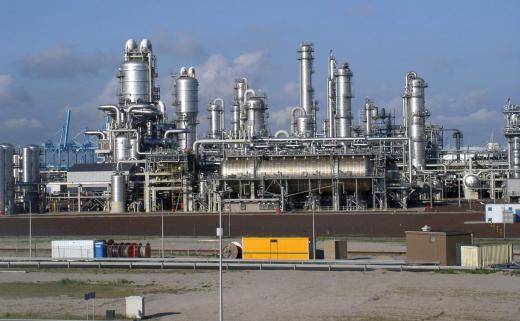What is Titanium Sponge?
Titanium sponge is a porous form of titanium that is created during the first stage of processing. In its natural form, titanium is widely available within the earth’s crust. After being extracted, it is processed to remove excess materials and convert it into a usable, although costly, product.
The conversion process used with raw titanium is called the Kroll process. This is a complex, multistage, batch process that requires very high heat and specialized equipment. The Kroll process converts the metal oxide into chloride by passing the metal over extremely hot rutile or ilmenite and carbon to create titanium tetrachloride. These chemicals are separated through a process called fractional distillation in which the components of a mixture are separated based on their different boiling points.

The material resulting from the Kroll process is titanium sponge. This sponge is then subjected to leaching or heated vacuum distillation to remove further impurities. The remaining materials in the sponge are jack hammered, crushed, pressed and melted to remove even more impurities.
In the next stage of the process, the titanium sponge is melted. It is then put through a process of fractional distillation to remove excess liquid and combined with molten magnesium, iron aluminum, vanadium or molybdenum and argon in a very hot furnace. The purpose of combining these materials is to add strength and stability to the titanium sponge and create a pliable metal alloy.

At this point, the converted titanium sponge is ready for fabrication. Some firms sell titanium sponge as a finished product, while others complete the conversion process internally. The sponge can now be formed into mill shapes such as a bar, plate, sheet or tube. These products are then shipped to different mills and fabricators to created finished products for commercial use.

Titanium is used to produce parts for jet engines, missiles, orthopedic implants, jewelry and mobile telephones. The most important properties of titanium are its low density and high level of corrosion resistance. Although six times as expensive as steel, titanium is very resistant to corrosion in both sea water and chlorinated water, making it popular with a wide range of manufacturers.
Titanium was first discovered and documented by William Gregor in 1791. Although purified titanium is quite costly, it is available in its basic form, in almost all living creatures. It can also be found in rocks, water and soil. The process of extracting it and combining it with alloys is what makes the procedure complex and expensive.
AS FEATURED ON:
AS FEATURED ON:













Discussion Comments
Titanium alloy products, such as bars, plates, wires, tubes, fasteners and custom design parts, are all made of titanium sponge. It is a raw material.
Does anyone know who manufactures titanium foam or sponge? I am looking for it in the finished goods state, in sheet form, approx 3/8"-1/2" thick. Possibly a commercially pure or 6al-4v alloy.
Titanium sponge would be a good band name. Or it would be cool to see a sponge made out of titanium as some kind of pop art sculpture.
@nextcorrea - You're right, it is complicated. I've worked in various capacities in different foundries my whole life. For a while I worked in one that manufactured titanium. It was completely different than any metal working environment I've ever been in. The level of technology and precision at work in that place was incredible. It almost made me miss some place dirty and simple like a steel mill.
Wow, I had no idea how complicated it is to make titanium. I always imagined that there was a lot to it but this sounds like a tremendous amount of science and technology applied to all the most basic challenges of working with metals.
I guess that this incredible metal lives up to its reputation. If I was easy to make it probably would not be as prized for its strength and low weight.
Post your comments